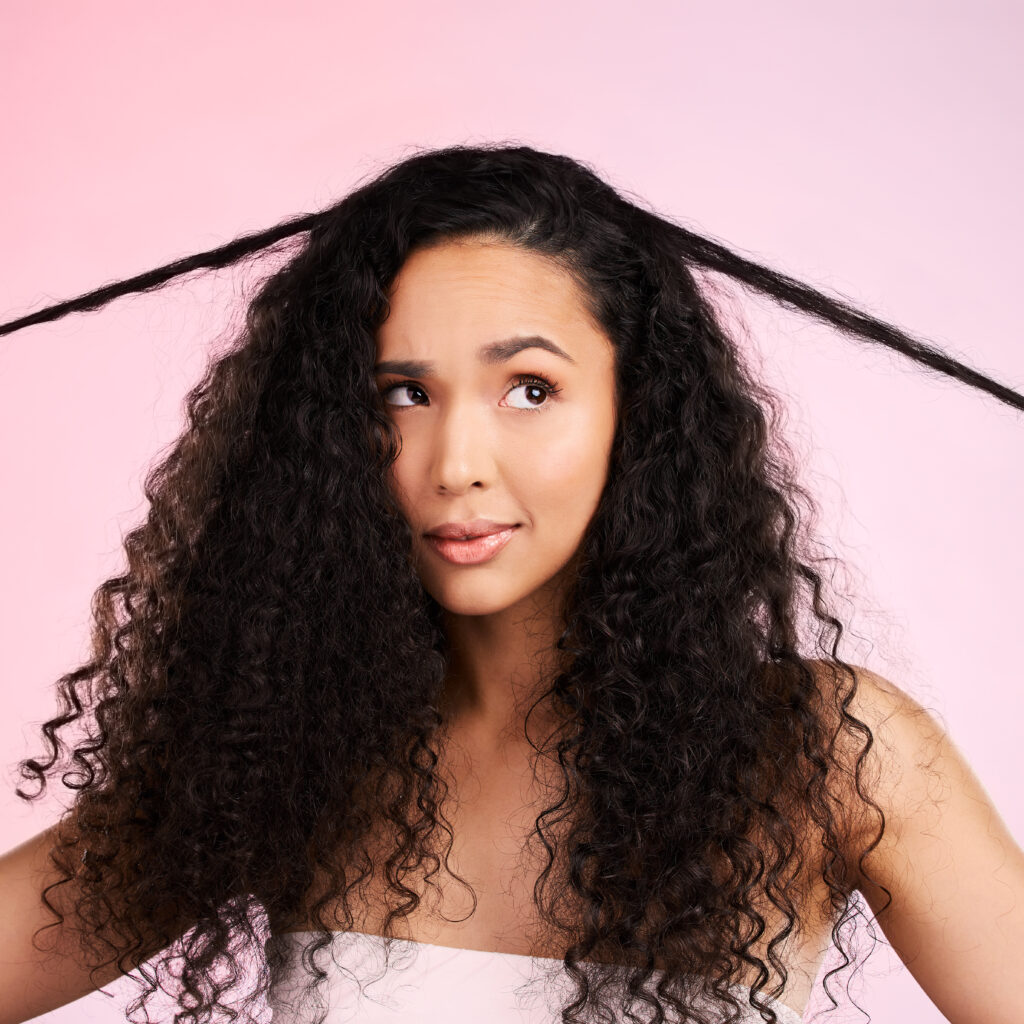
Brittle, dry hair can feel like a constant battle, leaving your locks looking dull, frizzy, and lifeless.
Whether it’s the harsh effects of weather, overuse of heat styling tools, or chemical treatments, dry hair is a common issue that affects many. But don’t despair—understanding the root causes of dryness is the first step to reclaiming soft, vibrant hair. Addressing dry hair isn’t just about aesthetics; it’s about restoring your hair’s health and vitality. With the right care, your strands can go from parched to perfectly nourished, revealing the beautiful, glossy hair you’ve always wanted.
Understanding Dry Hair
Dry hair occurs when your strands lack the moisture they need to stay soft and shiny, leaving them rough, dull, and prone to breakage. While dry hair often gets confused with damaged hair, they are not the same. Dry hair is primarily a moisture issue, whereas damaged hair results from the physical or chemical breakdown of the hair’s structure. However, these issues can overlap. Several factors contribute to dry hair. Environmental conditions, like sun exposure and low humidity, can strip away natural oils.
Additionally, frequent heat styling and chemical treatments, such as coloring and perms, deplete the hair’s moisture levels. On top of that, improper care routines, like over-washing or using harsh products, can exacerbate dryness. Understanding these causes is essential for restoring your hair’s health and achieving the luscious locks you desire.

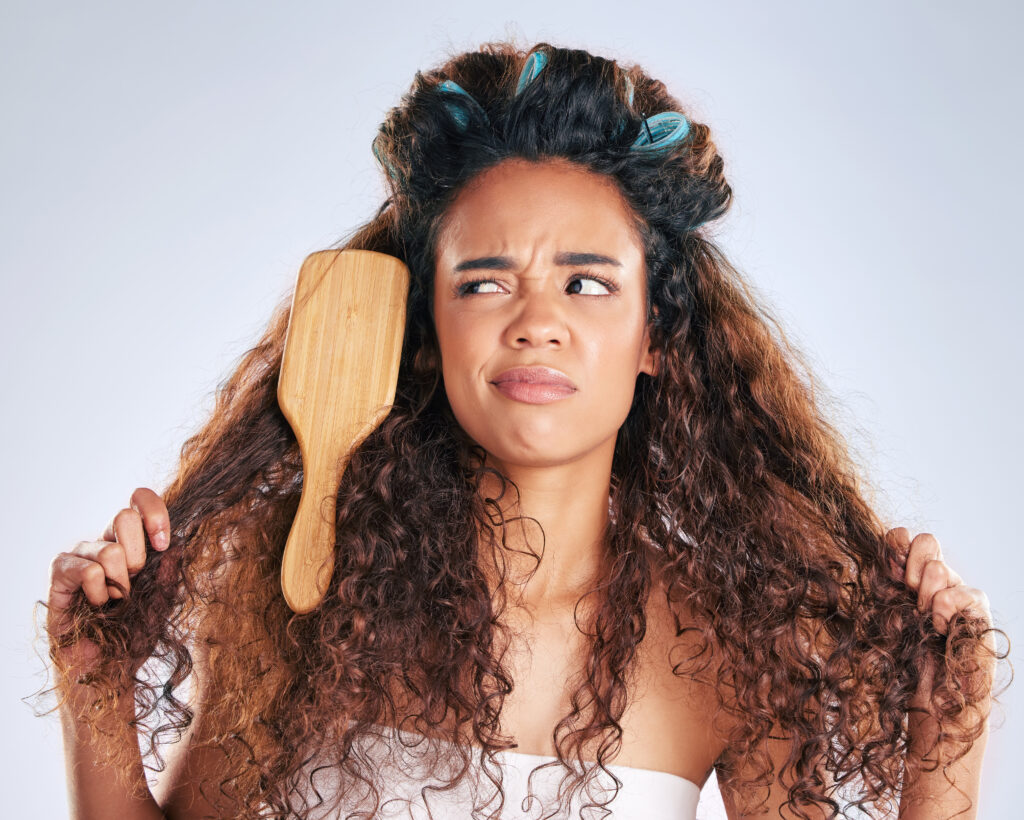
Signs That Your Hair is Dry
Recognizing dry hair is easy once you know what to look for. Visually, dry hair often appears frizzy and unruly, with split ends that seem to multiply no matter how often you trim them. Additionally, the once-lustrous shine is replaced with a dull, lackluster appearance that lacks vibrancy and life. However, the signs aren’t just visible—dry hair also has a distinct texture. To the touch, it feels brittle and rough, lacking the smoothness and softness of healthy hair.
Moreover, you may notice that it tangles easily, breaking off when you try to run your fingers through it, which only worsens the issue. Ultimately, these signs are clear indicators that your hair is thirsting for moisture and care, and addressing them early can help prevent further damage and restore your hair’s natural beauty.
Best Practices for Preventing and Treating Dry Hair
Gentle Hair Care Routine
- Shampooing:
- Use a Moisturizing Shampoo: Opt for shampoos specifically designed for dry hair. Look for ingredients like glycerin or natural oils.
- Wash with Lukewarm Water: Hot water can strip away natural oils; use lukewarm water to keep your hair’s moisture intact.
- Avoid Over-Washing: Shampoo no more than 2-3 times a week to prevent stripping your hair of its natural oils.
- Conditioning:
- Apply Conditioner Generously: Use a rich, hydrating conditioner every time you shampoo. Focus on the mid-lengths to ends of your hair.
- Leave in for a Few Minutes: Allow the conditioner to sit for a few minutes before rinsing to maximize hydration.
- Rinse with Cool Water: Finish with a cool rinse to seal the hair cuticle and enhance shine.
- Using Leave-In Products:
- Apply Leave-In Conditioner: Use a leave-in conditioner or detangler after washing to maintain moisture and ease combing.
- Use Hair Oils or Serums: Apply a nourishing oil or serum to damp hair to lock in moisture and add shine.
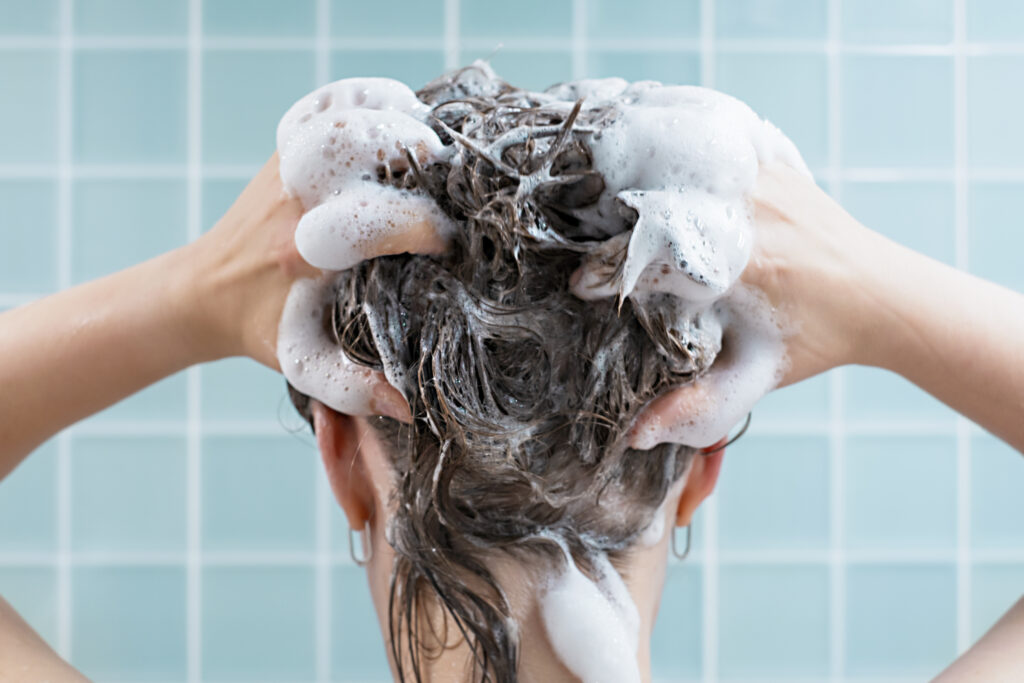
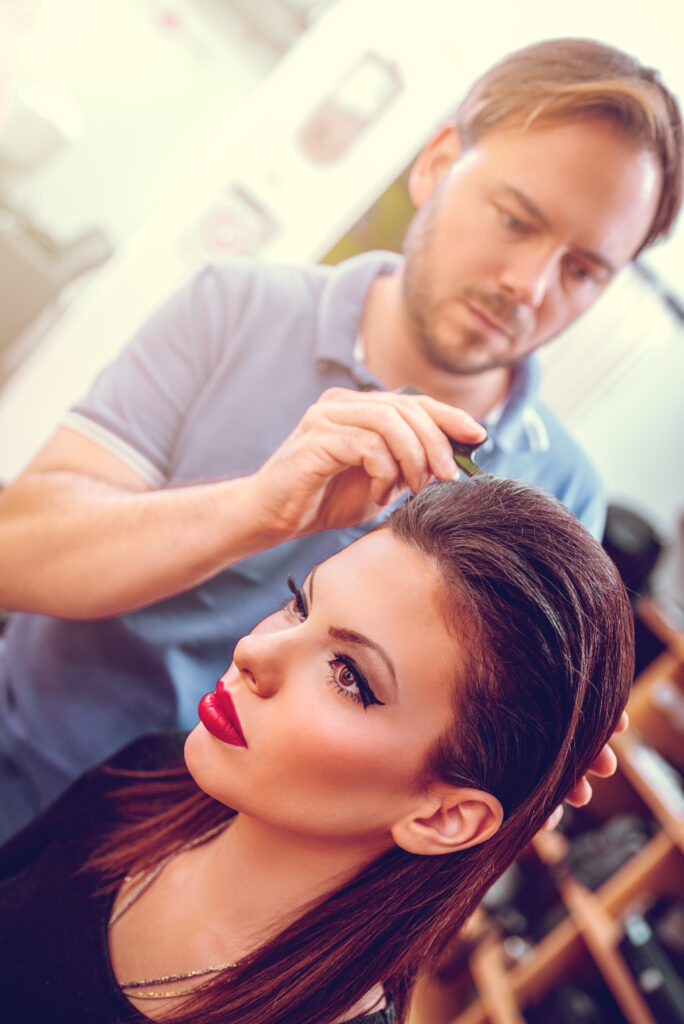
Avoiding Heat and Chemicals
- Reduce Heat Styling:
- Limit Use of Hot Tools: Avoid daily use of hair dryers, curling irons, and straighteners. Opt for air-drying whenever possible.
- Use Heat Protectant: When heat styling is necessary, always apply a heat protectant spray to shield your hair from damage.
- Avoid Chemical Treatments:
- Minimize Coloring and Perming: Reduce the frequency of hair coloring, perming, or relaxing treatments that can further dry out your hair.
- Seek Professional Help: If you must undergo chemical treatments, ensure they are performed by a professional and follow up with intensive moisturizing treatments.
- Protective Measures:
- Use Heat-Free Styling: Experiment with heat-free styling methods, such as braiding damp hair for waves or using rollers.
- Opt for Gentle Brushes: Use wide-tooth combs or brushes with soft bristles to avoid breaking your hair when detangling.
Proper Diet and Hydration
- Stay Hydrated:
- Drink Plenty of Water: Aim to drink at least 8 glasses of water a day to keep your hair and body hydrated from within.
- Incorporate Hydrating Foods: Eat water-rich foods like cucumbers, watermelon, and oranges.
- Balanced Diet:
- Include Healthy Fats: Consume foods rich in omega-3 fatty acids, such as avocados, nuts, and fatty fish, to nourish your hair.
- Eat Protein-Rich Foods: Ensure a sufficient intake of protein from sources like lean meats, beans, and legumes to support hair strength and growth.
- Add Vitamins and Minerals: Incorporate foods high in vitamins A, C, D, and E, as well as zinc and biotin, to promote healthy hair.
- Supplements:
- Consider Hair Supplements: If needed, take supplements like biotin or omega-3 fatty acids, but consult a healthcare provider before starting any new supplement regimen.

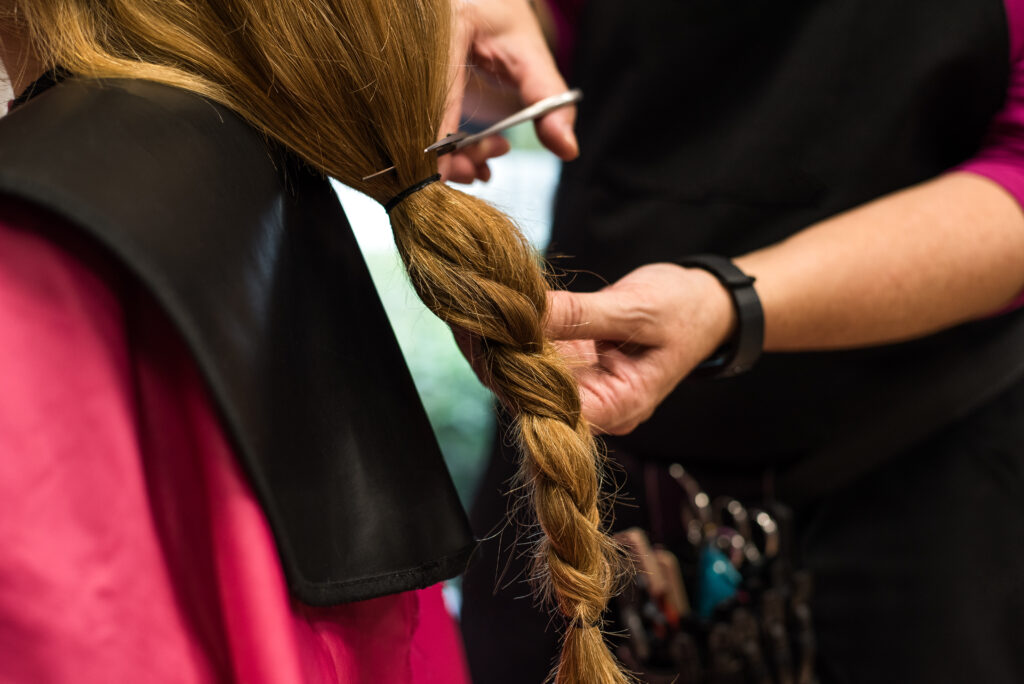
Common Mistakes to Avoid
- Washing hair too often strips natural oils; limit to 2-3 times a week and use dry shampoo in between.
- Avoid products with harsh chemicals or sulfates; choose gentle, moisturizing options.
- Apply products correctly—focus on the ends, not the roots, to prevent buildup and dryness.
- Always use conditioner to add moisture, especially on the ends of your hair.
- Wash with lukewarm or cool water to preserve natural oils and prevent dryness.
- Minimize heat styling and always use a heat protectant spray to avoid damage.
- Regularly trim split ends to prevent further damage and maintain hair health.
- Stay hydrated by drinking plenty of water to support healthy hair.
- Gently pat hair dry with a soft towel to reduce friction and prevent breakage.
Expert Tips and Tricks
Professional Insights: Hair care professionals often suggest incorporating a deep conditioning treatment into your weekly routine to effectively restore moisture and repair damage. Additionally, they recommend steering clear of shampoos containing sulfates and opting instead for those enriched with hydrating ingredients like oils and butters. Moreover, dermatologists emphasize the importance of a balanced diet, noting that consuming omega-3 fatty acids and essential vitamins can significantly enhance overall hair health.
Styling Techniques: To minimize the appearance of dryness, consider using a silk or satin pillowcase, which reduces friction and prevents hair breakage. Furthermore, opting to air-dry your hair rather than using a blow dryer can help retain moisture and reduce heat damage. In addition, when styling, choose products specifically designed for dry hair and avoid over-brushing, as this can lead to frizz and split ends.
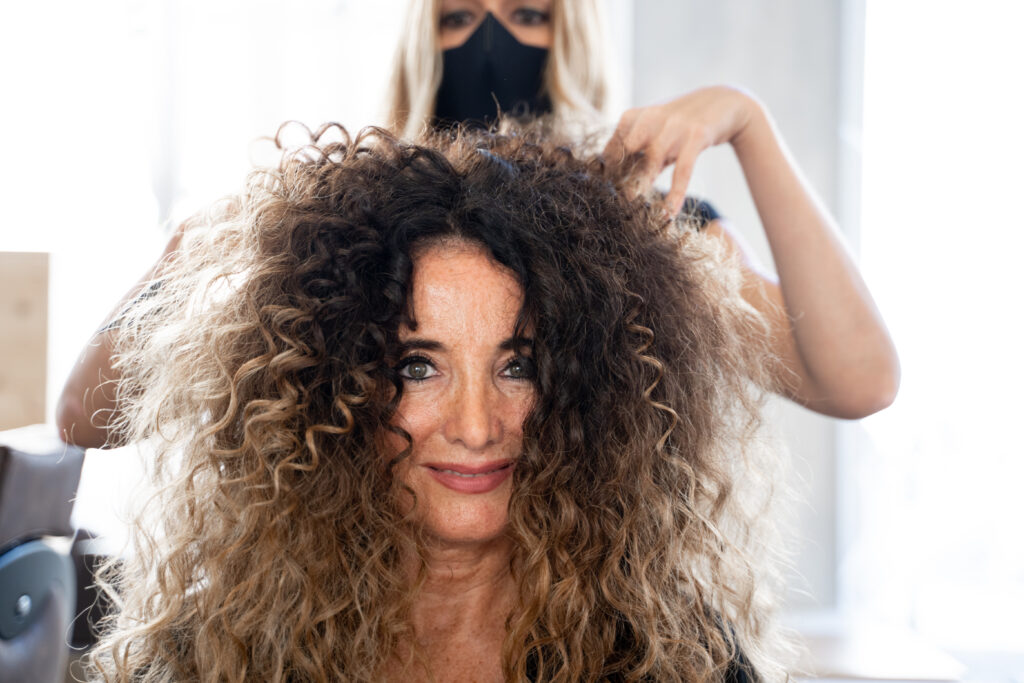
FAQ
For dry hair, it’s best to wash it no more than 2-3 times a week. Over-washing can strip away natural oils, which can further exacerbate dryness. On days between washes, you can use a dry shampoo to keep your hair fresh.
Choose shampoos and conditioners that are specifically formulated for dry or damaged hair. Look for products that are sulfate-free and contain moisturizing ingredients such as glycerin, natural oils, or butters.
Using a silk or satin pillowcase can reduce friction and prevent breakage. Additionally, consider loosely braiding your hair or using a silk hair wrap to minimize tangling and damage while you sleep.
If you’ve tried various treatments and home remedies without improvement, or if your hair feels excessively brittle and damaged, it may be time to consult a dermatologist or a hair care professional. They can help identify underlying issues and recommend specialized treatments.
Hair masks provide intensive hydration and nourishment. They often contain concentrated ingredients that penetrate deeply into the hair shaft to restore moisture, repair damage, and improve overall texture and elasticity. Using a hair mask once a week can significantly benefit dry hair. “Learn More“
It’s generally better to use a wide-tooth comb on dry hair to reduce breakage and minimize damage. Brushing can cause more friction and lead to increased dryness and split ends, especially if the hair is already brittle.

